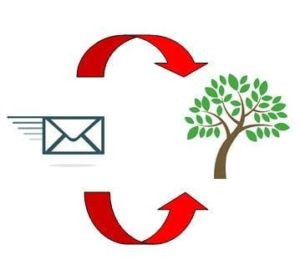
Many mailbox providers offer marketers a service that provides insight into complaints that were generated by their subscribers; this service is called a feedback loop (FBL). Generally, feedback loops work by tracking the messages subscribers complain about and sending this information to the marketer so that they can promptly remove the complainer. Most feedback loops are sent in Abuse Reporting Format (ARF), which is a format designed to provide generic spam reports and is typically an attachment to an email that includes header information from the offending message.
An example of an ARF report is:
What major mailbox providers have FBLs?
Some popular mailbox provides that offer feedback loops include AOL, Microsoft, Yahoo, Comcast, United Online, Cox, Roadrunner, and many others. Gmail recently launched a feedback loop tool for high volume senders and email service providers. Unlike most other feedback loops, the Gmail FBL does not come in Abuse Reporting Form. Gmail’s feedback loop only provides a report with aggregate spam statistics based on identifiers in the header in order to protect their users’ privacy. Gmail only provides aggregate data because the FBL is designed to help high volume senders identify abuse generated from their systems. It is not intended to be used like other feedback loops that are used as a tool to remove complainers.
How to be “in the loop”
The nice thing about feedback loops is that signing up for them can be quite easy. Most mailbox provider postmaster sites offer links directly to their feedback loop sign up:
In order to receive the ARF reports it’s important to create an email address where these reports should be directed to.
Outlook.com (formerly Hotmail) is a bit different in the setup of their feedback loops. Although they do send their reports via ARF format, they require a login to their Sender Network Data Services (SNDS) before submitting to their Junk Mail Reporting system (JMR), which is their feedback loop. Signing up for SNDS is a good idea for your email program overall because it allows insight into Hotmail complaints, spam trap hits, and filter results. Using both the SNDS tool and Outlook.com’s feedback loop program (JMR), gaining insight into complaint issues is easier and removing complainers should be more effective.
Return Path can also assist in the setup of Feedback Loops for Platinum clients or through our ISP connect. For more information contact your Return Path relationship manager or visit our professional services page.
Why it’s important to be “in the loop”
Feedback loops are a free tool that allows insight into who is complaining about your email campaigns. They are an easy way to mitigate complaints that could ultimately reduce your reputation score, drive your certified IP address into suspension, or cause blocks at mailbox providers. By removing the complainers you see on your ARF reports before those subscribers mark your mail as spam, you are doing your email program a huge favor.
If your email program is having a problem with complaints, there are a number of things to look at to help alleviate the problem. However, an easy first step is to see if you’re signed up for feedback loops and if you are processing complainers. Often times, email service providers will offer assistance in processing the feedback loops by making it an automatic process. So check with your email service provider if you’re unsure of how the feedback loop complainers are being handled.
Feedback loops and biology
When you do a quick Google search for feedback loops, the first results that arise relate to biology. In nature, a feedback loop is a system that causes the output from one source to influence the input of another source. The loop is a chain of cause-and-effect that continually feeds back into itself.
While the email world is not biology, the same idea of a biological feedback loop can apply to that of an email feedback loop. If you continually remove complainers via the info supplied from feedback loops you are in turn improving our overall email program. The cycle of receiving complaint info and removing complainers feeds back into your overall email program by continuously improving it. And by doing so, you will always be “in the loop.”


